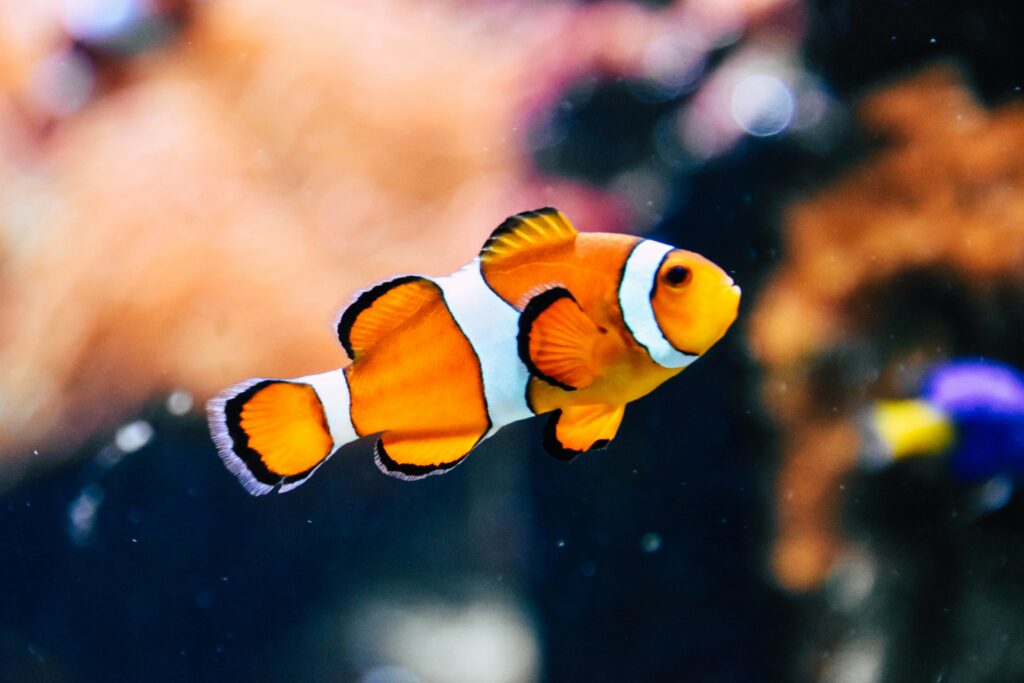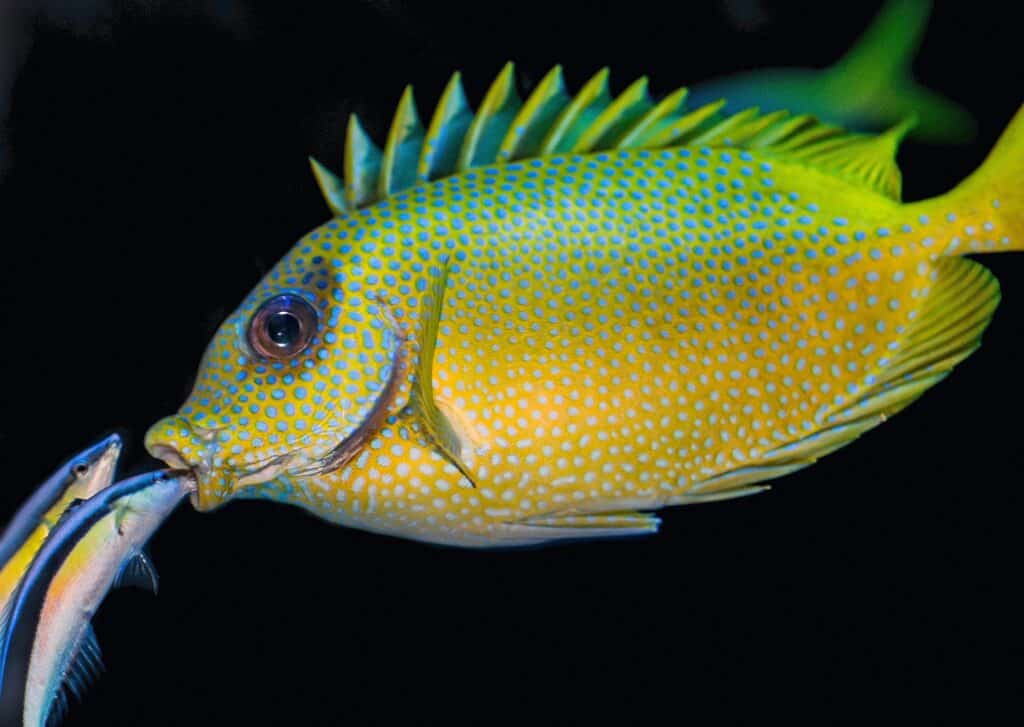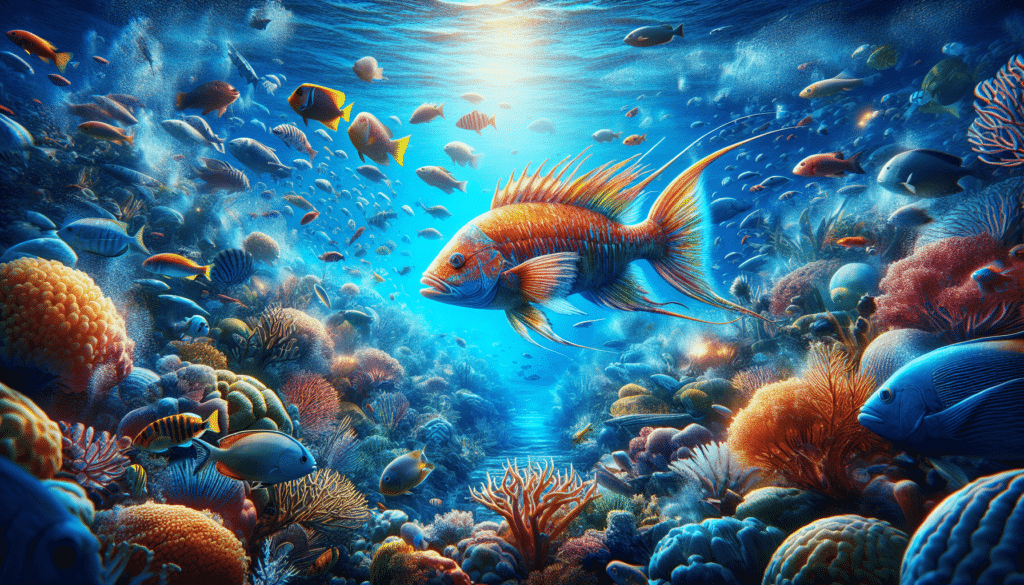So you’ve decided to take a trip to Flamingo Marina and try your luck at fishing, but you’re not sure which fish species you might encounter? Don’t worry, we’ve got you covered! In this article, we’ll give you a brief rundown of the most popular fish species you’re likely to find at Flamingo Marina. Whether you’re an experienced angler or a complete beginner, get ready to cast your line and reel in some impressive catches!

The Flamingo Marina Environment
Geographical location of Flamingo Marina
Flamingo Marina is located in the picturesque Guanacaste province of Costa Rica. Situated on the northern Pacific coast, this coastal town is blessed with breathtaking natural beauty. The marina itself is nestled within the stunning Papagayo Gulf, surrounded by lush greenery and clear turquoise waters. The favorable geographical location of Flamingo Marina makes it an ideal destination for fishing enthusiasts from around the world.
Marine ecosystem of Flamingo Marina
The marine ecosystem at Flamingo Marina is teeming with life and offers a rich biodiversity. The pristine waters are home to a wide variety of fish species, making it a paradise for fishermen. The healthy coral reefs and vibrant seagrass beds serve as a habitat for numerous marine organisms. Whether you are an experienced angler or a novice, exploring the diverse marine ecosystem at Flamingo Marina is an unforgettable experience.
Significance as a fishing hotspot
Flamingo Marina has earned its reputation as a fishing hotspot, and for good reason. The abundance of fish species and the favorable weather conditions make it a dream destination for anglers. Whether you are looking to catch trophy-sized fish or simply enjoy a relaxing day on the water, Flamingo Marina offers it all. The marina provides easy access to the best fishing spots, ensuring that every fishing expedition is a memorable one.
The Panoramic Fish Species
Overview of the prevalent fish species
Flamingo Marina is home to a wide range of fish species that will fascinate any angler. From the powerful Tarpon to the elusive Bonefish, the marina offers a diverse array of fishing opportunities. The most popular fish species include Tarpon, Snook, Redfish, Bonefish, Sea Trout, and Barracuda. Each species possesses unique characteristics and provides a thrilling challenge for anglers of all skill levels.
Classification of fish species at Flamingo Marina
The fish species at Flamingo Marina can be classified into different categories based on their habitat and behavior. The offshore species, such as Tarpon and Barracuda, prefer the deeper waters of the Gulf. The inshore species, including Snook and Redfish, can be found closer to the coast in the mangrove-lined estuaries. Lastly, the flats species like Bonefish and Sea Trout are commonly found in the shallow flats and seagrass beds.
Unique characteristics of the species
Each fish species at Flamingo Marina possesses unique characteristics that make them fascinating to target. Tarpon, known for their acrobatic jumps and sheer strength, provide an exhilarating fight. Snook, with their distinct black lateral line and sharp gill plates, are known for their cunning nature. Redfish, recognized by their vibrant copper-colored scales and spot patterns, are highly sought after for their delicious flesh. Bonefish, with their slender bodies and incredible speed, require utmost precision to catch. Sea Trout, with their characteristic silver bodies and toothy jaws, provide an exciting challenge. Finally, Barracuda, with their long, slender bodies and razor-sharp teeth, evoke a sense of awe and excitement.
Tarpon
General characteristics of Tarpon
Tarpon, also known as the “Silver Kings,” are one of the most majestic fish species found at Flamingo Marina. They are renowned for their impressive size and fighting capabilities. Tarpon can grow up to 8 feet in length and weigh over 200 pounds, making them a challenging target for anglers. Their silver bodies, large scales, and distinctive elongated jaws make them easily recognizable.
The season for Tarpon at Flamingo Marina
The Tarpon season at Flamingo Marina is most active from March to October. During these months, Tarpon migrate to the area in large numbers, offering excellent opportunities for anglers. The warm waters and favorable weather conditions attract these magnificent creatures to the marina. Anglers can expect to encounter schools of Tarpon, providing an adrenaline-pumping fishing experience.
Fishing methods for Tarpon
To successfully catch Tarpon at Flamingo Marina, anglers employ various fishing methods. Live bait, such as mullet, crabs, and sardines, is commonly used to entice these powerful fish. Fishing with artificial lures, such as jigs and plugs, can also be effective in attracting Tarpon. Additionally, fly fishing for Tarpon is a popular technique, requiring precise casts and well-presented flies. Patience, skill, and a bit of luck are crucial when targeting Tarpon, making the experience all the more rewarding.
Snook
Distinct features of Snook
Snook, also known as “Robalo” in Spanish, are a favorite among anglers at Flamingo Marina. They are known for their exceptional fighting abilities and excellent table fare. Snook have distinct black lateral lines running across their sleek bodies, which help them blend into their surroundings. With sharp gill plates and a protruding lower jaw, Snook are formidable adversaries for any angler.
Best time to catch Snook at Flamingo Marina
The best time to catch Snook at Flamingo Marina is during the months of December to April. Snook prefer warmer water temperatures and are most active during this period. Anglers can expect to find these elusive fish in the estuaries, mangroves, and river mouths that surround the marina. It is important to note that Snook have specific regulations and seasonal closures, so it is essential to stay informed about the fishing laws in the area.
Useful tips for Snook fishing
When targeting Snook, it is crucial to be stealthy and approach the fishing spots with caution. Snook are intelligent and easily spooked, so making quiet casts and using light tackle are essential. Using live bait, such as shrimp or small fish, is a popular method for enticing Snook. Artificial lures, such as soft plastics and topwater plugs, can also be effective in attracting these voracious predators. Patience and persistence are key when it comes to Snook fishing, as landing one of these elusive creatures is a rewarding experience.

Redfish
Identifying a Redfish
Redfish, also known as Red Drum, are one of the most iconic fish species found at Flamingo Marina. They are characterized by their vibrant copper-colored scales and distinctive spot patterns. Redfish have a powerful tail and a large, upturned mouth, enabling them to forage efficiently. These hard-fighting fish are highly prized for their delectable flesh and are a sought-after catch for anglers.
Seasonal patterns in Redfish population
The Redfish population at Flamingo Marina exhibits seasonal patterns. These fish are most abundant during the cooler months, from October to March. Redfish are known to gather in schools, creating exciting opportunities for anglers. During the warmer months, Redfish may become more scattered, making them slightly harder to locate. The changing seasons bring about variations in the Redfish population, offering anglers a unique challenge throughout the year.
Catch methods suitable for Redfish
When it comes to catching Redfish at Flamingo Marina, there are several effective techniques anglers can utilize. Live bait, such as shrimp or finger mullet, is a popular choice for attracting these fish. Redfish are also known to be ambush predators, so using cut bait, such as mullet or squid, can yield favorable results. Artificial lures, such as spoons, soft plastics, and crankbaits, can also entice Redfish into striking. Employing a range of techniques and adapting to the conditions will increase the chances of a successful Redfish catch.
Bonefish
Bonefish identification and features
Bonefish, often referred to as the “Grey Ghosts” of the flats, are a highly coveted species among anglers at Flamingo Marina. They are characterized by their slender bodies, silvery scales, and deeply forked tails. Bonefish can grow up to 30 inches in length and are known for their blistering speed. These elusive fish possess a keen sense of sight and are notorious for their wariness, making them a thrilling challenge for any angler.
Migratory patterns of Bonefish
Bonefish at Flamingo Marina exhibit migratory patterns, moving between the shallow flats and deeper waters. They are most commonly found in the shallower areas during the warmer months, seeking food and suitable spawning grounds. As the water temperatures drop, Bonefish tend to move towards deeper channels and creeks. Their migratory behavior adds an element of unpredictability to Bonefish fishing, making each encounter a thrilling experience.
Fishing techniques employed for Bonefish
Fishing for Bonefish requires a combination of skill, patience, and finesse. Anglers often use lightweight spinning or fly fishing gear to target these elusive creatures. The use of small, lightweight flies that imitate their natural prey, such as shrimp or crab patterns, can be highly effective. Additionally, sight casting to Bonefish, where anglers spot them cruising in the shallows, is a popular technique. Stealth and accurate casts are crucial when attempting to entice a Bonefish to strike. Successfully reeling in one of these prized fish is an achievement every angler dreams of.

Sea Trout
Characteristic traits of the Sea Trout
Sea Trout, also known as “Spotted Seatrout,” are a highly sought-after species at Flamingo Marina. They are recognized for their distinctive silvery bodies, marked with numerous black spots. Sea Trout have elongated bodies and prominent canine teeth, which they use to catch their prey. These predatory fish exhibit both estuarine and nearshore habitats, offering diverse fishing opportunities for anglers.
Seasonality of the Sea Trout
The Sea Trout season at Flamingo Marina is year-round, making them a reliable target for anglers. However, their abundance may vary throughout the year, with peak populations observed during the cooler months. Sea Trout are known to be more active during dawn and dusk, when they actively feed. A thorough understanding of the seasonal patterns and behavior of Sea Trout can greatly enhance the chances of a successful catch.
Fishing protocols for the Sea Trout
When targeting Sea Trout, anglers can employ various fishing protocols to maximize their success. Light to medium spinning tackle is commonly used for Sea Trout fishing, paired with live bait, such as shrimp or finger mullet. Artificial lures, such as soft plastics and topwater plugs, can also be effective in enticing these voracious feeders. Sea Trout tend to congregate near structures like oyster beds or underwater ledges, so fishing near these areas can yield fruitful results. Adjusting the retrieval speed and experimenting with different lure presentations can significantly improve the odds of hooking a Sea Trout.
Barracuda
Typical features of Barracuda
Barracuda, with their menacing appearance and lightning-fast strikes, are an exciting species to target at Flamingo Marina. They are easily recognizable by their long, slender bodies and razor-sharp teeth. Barracuda can grow up to 6 feet in length and are known for their ferocious hunting behavior. Anglers are often mesmerized by the sheer power and speed of these apex predators.
Peak times for Barracuda fishing
For those seeking an adrenaline rush, Barracuda fishing is best during the warmer months at Flamingo Marina. These predators are highly active from April to September, patrolling the deeper waters in search of prey. They can be found near drop-offs, reefs, and submerged structures. Barracuda are opportunistic feeders, attracted to fast-moving lures that resemble small fish. Anglers can enjoy the thrill of a Barracuda strike during these peak months.
Effective Barracuda fishing techniques
When targeting Barracuda, it is important to use strong, abrasion-resistant fishing gear, as their sharp teeth can easily cut through lines. Anglers often use flashy lures, such as metal spoons or bucktail jigs, to attract Barracuda. The key to success lies in imitating the fast and erratic movements of their natural prey, such as small fish or squid. Trolling, where lures are pulled behind a moving boat, can also be an effective technique for Barracuda fishing. Adapting to the Barracuda’s feeding patterns and adjusting lure presentations can significantly increase the chances of hooking one of these thrill-seeking predators.

Benefits of Fishing at Flamingo Marina
Biodiversity and abundance of fish
One of the key benefits of fishing at Flamingo Marina is the incredible biodiversity and abundance of fish species. Anglers can encounter a wide range of fish, from the powerful Tarpon to the elusive Bonefish. The diverse marine ecosystem provides ample opportunities for anglers of all levels to test their skills and catch their dream fish.
Versatility of fish species
Flamingo Marina offers a remarkable variety of fish species, catering to different fishing preferences. Whether you prefer inshore or offshore fishing, there is a species to match your interests. From the thrilling fights of Tarpon and Barracuda to the delicate precision needed for Bonefish and Snook, the versatility of fish species at Flamingo Marina ensures that every angler can find their ideal catch.
Scenic beauty of the Marina
Flamingo Marina’s exceptional location in the Guanacaste province offers stunning views and a tranquil setting. The picturesque coastline, with its crystal-clear waters and lush greenery, creates a serene backdrop for fishing expeditions. Anglers can enjoy the beauty of the marina while immersing themselves in the thrilling world of sport fishing.
Accessibility and support services for fishermen
Flamingo Marina provides easy accessibility and convenient support services for fishermen. The marina offers boat rentals, fishing charters, and experienced guides who are well-versed in the local waters. Anglers can rely on the expertise of these professionals to navigate the fishing grounds and enhance their fishing experience. Additionally, the marina provides amenities such as boat ramps, fuel stations, and tackle shops, ensuring that all fishing needs are met.
Impact of Fishing on Flamingo Marina’s Ecosystem
Effects on fish population
Fishing, when managed sustainably and responsibly, can have positive effects on the fish population at Flamingo Marina. Proper catch-and-release practices and adherence to fishing regulations allow fish populations to thrive. The controlled harvesting of fish species ensures that the ecosystem remains in balance and supports the long-term sustainability of the fishery.
Ecological balance and role of fishing
Fishing plays a vital role in maintaining ecological balance at Flamingo Marina. It helps control the population of certain species, preventing overpopulation and potential negative impacts on other marine organisms. Additionally, fishing provides valuable data for scientific research and helps monitor the health of the marine ecosystem. Responsible fishing practices contribute to the overall health and resilience of the ecosystem, allowing future generations to continue enjoying the treasures of Flamingo Marina.
Fishing regulations to protect the ecosystem
Flamingo Marina has established fishing regulations to protect the ecosystem and ensure the sustainable use of its marine resources. These regulations include size and bag limits, seasonal closures, and restricted areas to safeguard vulnerable fish populations and habitats. It is essential for anglers to familiarize themselves with these regulations and adhere to them, contributing to the conservation efforts and the preservation of Flamingo Marina’s pristine environment.
In conclusion, Flamingo Marina offers a remarkable fishing experience in the stunning backdrop of Costa Rica’s Guanacaste province. The diverse marine ecosystem, encompassing a wide range of fish species, captivates anglers from around the world. Whether it is the powerful Tarpon, elusive Snook, vibrant Redfish, lightning-fast Bonefish, or thrilling Barracuda, every fishing expedition at Flamingo Marina is an adventure. The abundance of fish, scenic beauty, accessibility, and support services make Flamingo Marina a dream destination for all fishing enthusiasts. However, it is crucial to remember the importance of responsible fishing practices to protect the ecosystem and ensure the sustainable enjoyment of Flamingo Marina for generations to come.











0 Comments